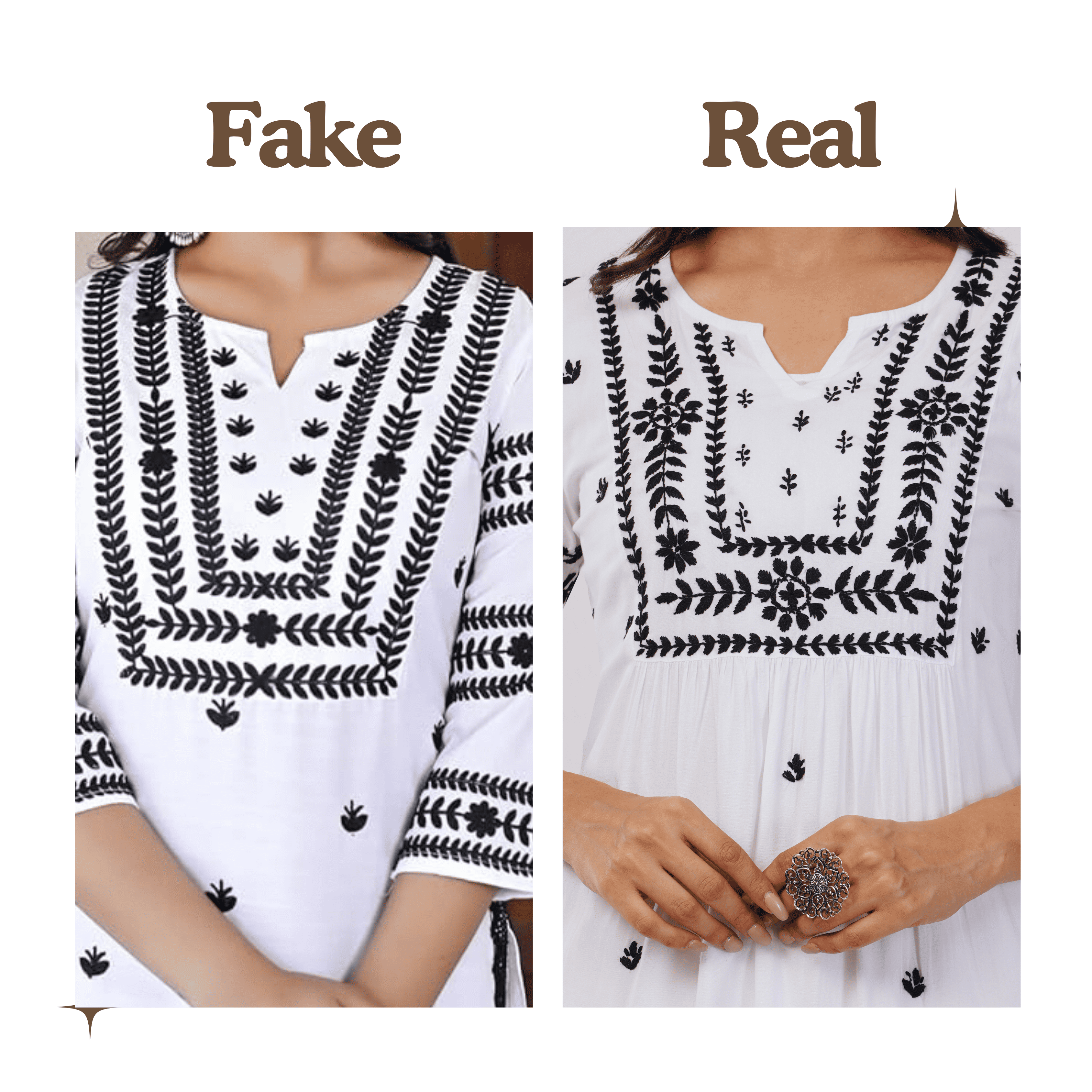
How to Identify Real Chikankari vs Fake?
Chikankari, a centuries-old embroidery art from Lucknow, India, is celebrated for its intricate craftsmanship and timeless elegance. However, with the growing demand for this exquisite art, the market is flooded with counterfeit products. If you're passionate about owning authentic Chikankari pieces, here's a comprehensive guide to help you distinguish the real from the fake.
1. Understand the Craftsmanship
Real Chikankari is a hand-embroidered art that involves delicate and precise stitches. The designs often include floral motifs, paisleys, and jaali (net) work. Each piece takes hours, sometimes days, to complete. On the other hand, fake Chikankari is typically machine-made, lacking the intricate detailing and uniformity of hand embroidery.
-
Tip: Look for uneven but consistent stitches. Machine embroidery often appears too perfect and lacks the depth of hand embroidery.
2. Feel the Fabric
Authentic Chikankari is usually done on high-quality fabrics such as cotton, georgette, chiffon, or silk. The fabric is soft, breathable, and lightweight, making it ideal for Indian weather.
-
Tip: Fake Chikankari often uses cheap, synthetic fabrics that feel rough and lack the elegance of authentic materials.
3. Inspect the Reverse Side
The backside of a real Chikankari piece reveals the artistry involved. You’ll notice knots and threads that signify hand embroidery. In fake pieces, the back is clean and lacks these telltale signs of craftsmanship.
-
Tip: Always turn the garment inside out to check for loose threads or tiny knots.
4. Check the Price
Authentic Chikankari is a labor-intensive craft, and its price reflects the effort and time invested. If a deal seems too good to be true, it probably is. Counterfeit products are often sold at significantly lower prices to attract buyers.
-
Tip: Research the market rates for Chikankari and avoid pieces that are unusually cheap.
5. Buy from Trusted Sellers
The safest way to ensure authenticity is by purchasing from reputed sellers, boutiques, or brands that specialize in Chikankari. Avoid random online marketplaces or unverified sellers.
-
Tip: Look for certifications or reviews from other buyers to validate the seller’s credibility.
6. Examine the Detailing
Real Chikankari features intricate patterns with a variety of stitches like bakhiya, phanda, murri, and jaali. Fake Chikankari, however, lacks the variety and finesse, often using just one or two simple stitch patterns.
-
Tip: Familiarize yourself with traditional Chikankari stitches and their appearances.
7. Check for Dye Quality
Authentic Chikankari often uses natural or high-quality dyes, ensuring that the colors don’t bleed or fade easily. Counterfeit products may use low-quality dyes that compromise the garment's longevity.
-
Tip: Perform a simple test by gently rubbing a wet cotton swab on the fabric to check for color bleeding.
By paying attention to these details, you can ensure that your Chikankari purchase is a genuine piece of this beautiful heritage art. Not only will you enjoy a high-quality product, but you’ll also be supporting the artisans who keep this tradition alive.
Closing Note: If you’re in doubt about a piece, don’t hesitate to ask the seller questions or request additional details. Authentic Chikankari is worth the effort to verify, as each piece is a treasure that combines skill, tradition, and artistrymanoj hegde